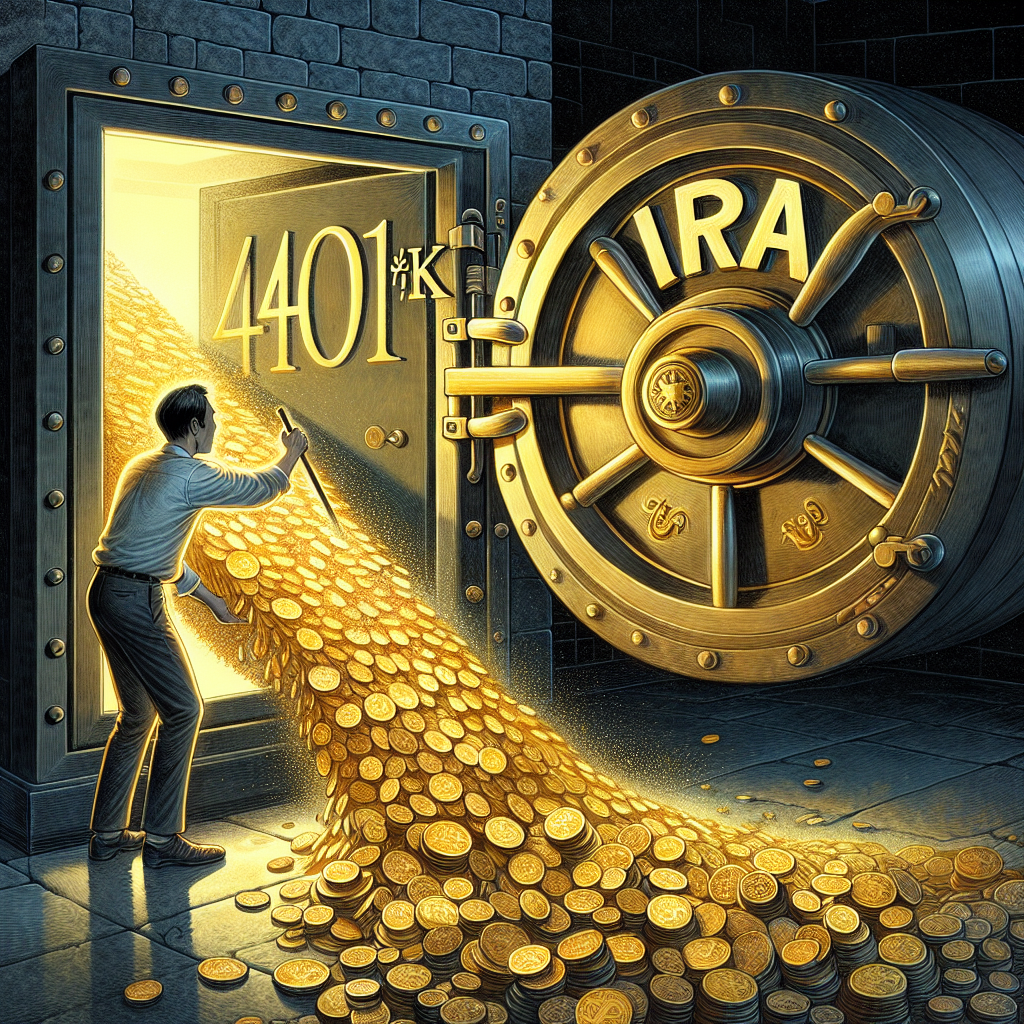
For countless investors, the allure of tangible assets like precious metals holds strong appeal.
Here’s a handy rundown on how to transition your 401(k) into a gold or silver IRA without incurring penalties.
Why Consider a Gold or Silver IRA?
If your goal is to possess actual gold or silver, as opposed to paper assets such as mining stocks or mutual funds that speculate on gold and silver’s future prices, traditional retirement accounts like IRAs and 401(k)s can accommodate both options. However, owning physical metals demands a specialized approach.
Need Professional Assistance?
When navigating the complex waters of investment management or retirement planning, connecting with a Certified Financial Planner® (CFP®) can be invaluable for mapping out a strategy tailored to your financial ambitions.
Four Essential Steps to Rollover Your 401(k) Into a Precious Metals IRA
1. Select a Trustworthy Custodian for Your Gold or Silver IRA
Launching your rollover begins with picking the right custodian to safeguard your precious metals IRA. Delve into the company’s track record and credibility by scouring online reviews to find a reputable institution that permits holding physical assets like gold, silver, platinum, and palladium within your retirement account.
Opening your account typically entails straightforward paperwork and submitting basic info, making the initial setup hassle-free.
2. Initiate the Transfer from Your Existing 401(k) to the New IRA
This crucial phase involves moving your funds from your 401(k) to the freshly minted gold or silver IRA. Transfers can happen in two flavors: direct or indirect. Understanding their nuances is key.
- Direct Rollover: Your 401(k) provider sends your funds straight to the new IRA custodian, minimizing the risk of penalties and simplifying the process.
- Indirect Rollover: Here, you receive a check from your 401(k) administrator and are responsible for redepositing that amount into your self-directed IRA within 60 days. Miss this deadline, and the IRS treats it as a taxable withdrawal, with an additional 10% penalty if you’re younger than 59½.
Quick Fact: According to IRS guidelines, the 60-day window for indirect rollovers is strictly enforced, with very few exemptions. Failing to adhere can result in unexpected taxes and penalties.
3. Acquire Your Physical Gold or Silver Holdings
Now that your IRA is funded, it’s time to buy your precious metals. Most custodians offer research tools and educational materials to assist in sound investment choices. Knowing where and how your tangible metals will be securely stored—either by the custodian or a certified third-party vault—is equally important.
4. Maintain and Monitor Your Self-Directed Precious Metals IRA
Ownership of physical gold and silver through a self-directed IRA demands active management. You’ll want to stay informed about market trends and storage conditions, ensuring your investment remains protected and aligned with your retirement goals.
Remember, transitioning your retirement savings from conventional assets like stocks and bonds into physical precious metals requires the structure of a specialized IRA company equipped to handle tangible investments.
Editorial Disclaimer: Investors should always conduct their own thorough research before making financial decisions. Historical performance is not indicative of future results.

